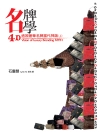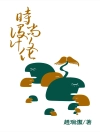This book tells the story of critical avant-garde design in Japan, which emerged during the 1960s and continues to inspire designers today. The practice communicates a form of visual and material protest drawing on the ideologies and critical theories of the 1960s and 1970s, notably feminism, body politics, the politics of identity, and ecological, anti-consumerist and anti-institutional critiques, as well as the concept of otherness. It also presents an encounter between two seemingly contradictory concepts: luxury and the avant-garde. The book challenges the definition of design as the production of unnecessary decorative and conceptual objects, and the characterisation of Japanese design in particular as beautiful, sublime or a product of ‘Japanese culture’. In doing so it reveals the ways in which material and visual culture serve to voice protest and formulate a social critique.
Tabela de Conteúdo
Introduction
1 Postmodern critiques, Japan’s economic miracle, and the new aesthetic milieu
2 The 1968 social uprising and subversive advertising design in Japan: the work of Ishioka Eiko and Suzuki Hachiro
3 From cute to Rei Kawakaubo: fashion and protest
4 Mujirushi Ryohin and the absence of style
5 Hironen and the representation of the other
6 Digital design as social and critical design in the twenty-first century
Index
Sobre o autor
Ory Bartal is Head of the Department of Visual and Material Culture at Bezalel Academy of Arts and Design, Jerusalem












